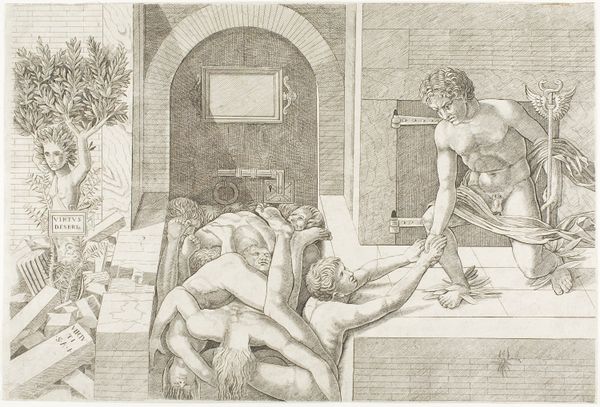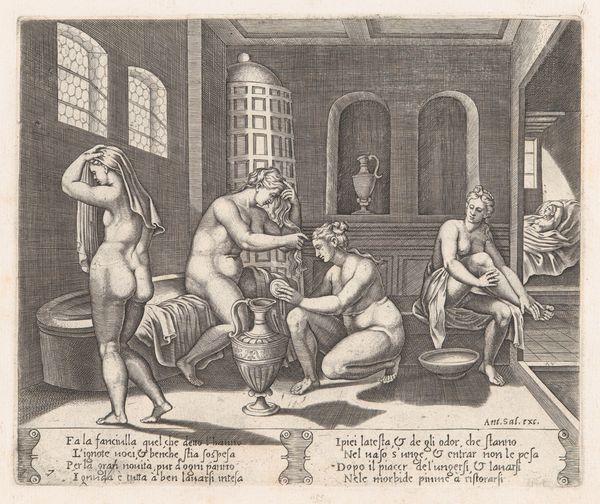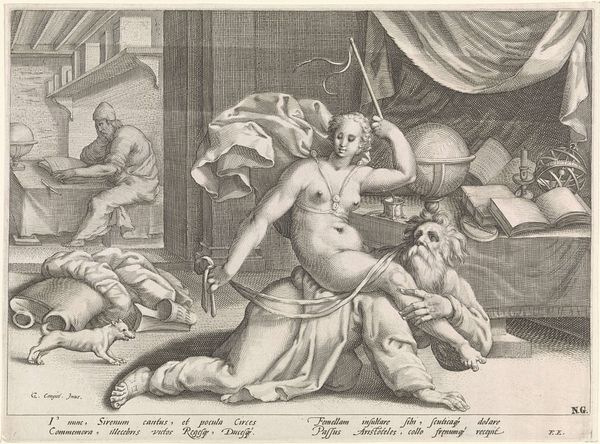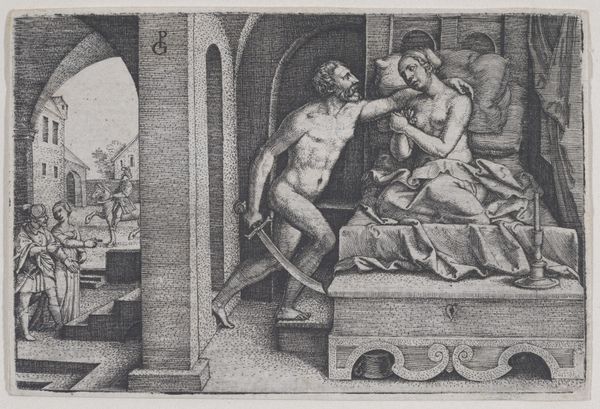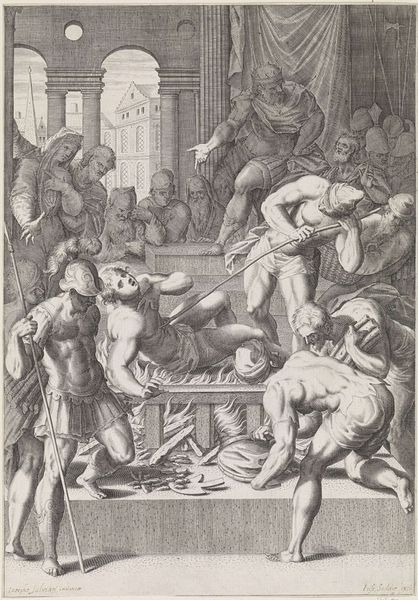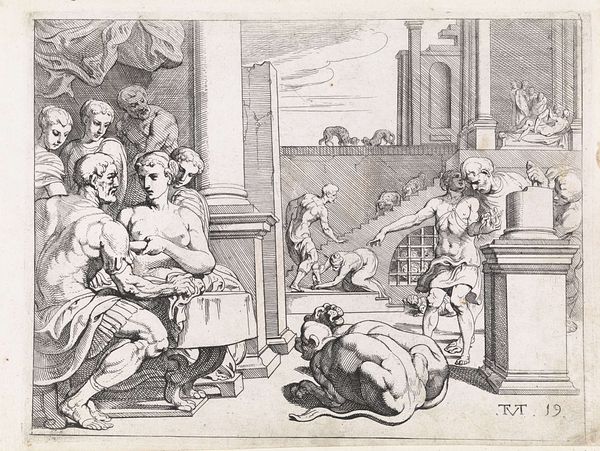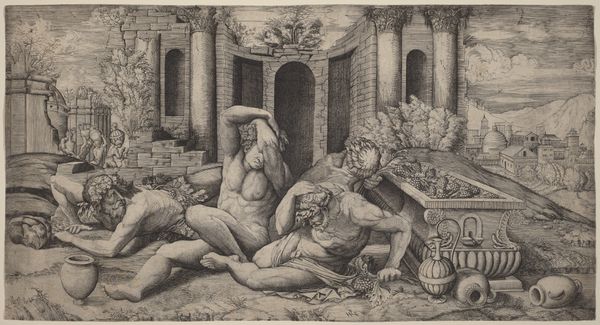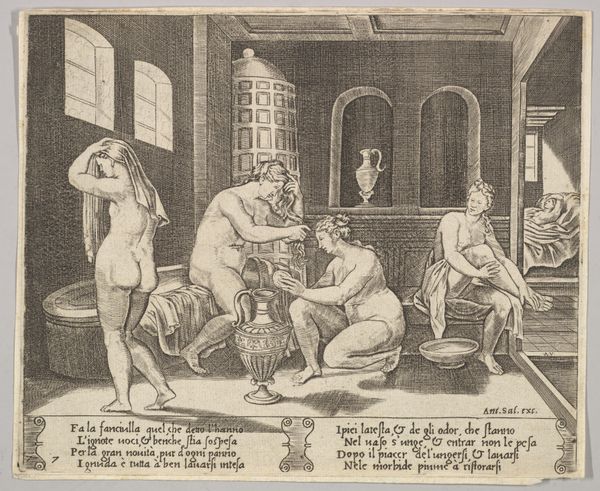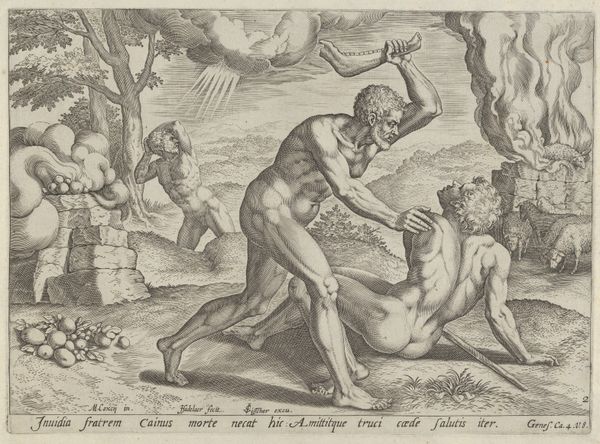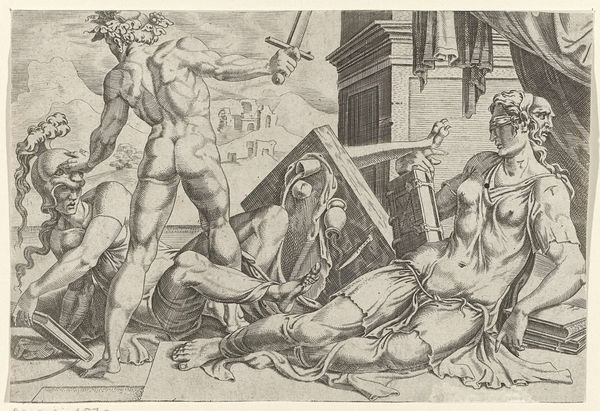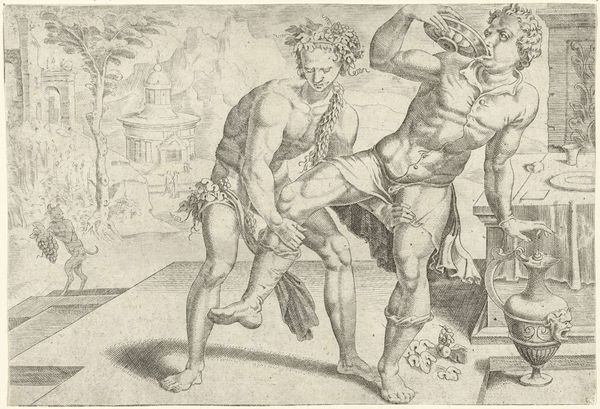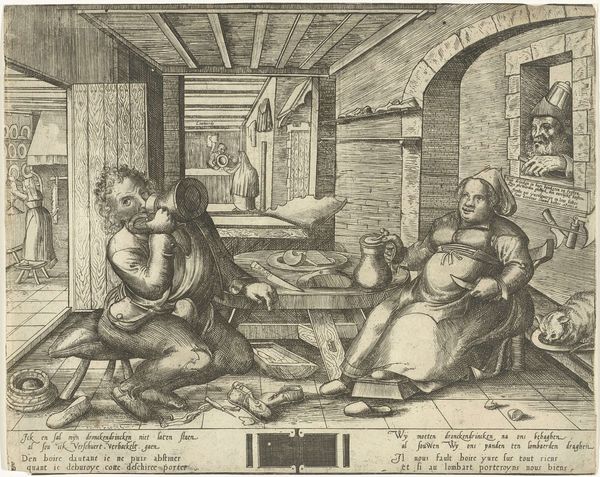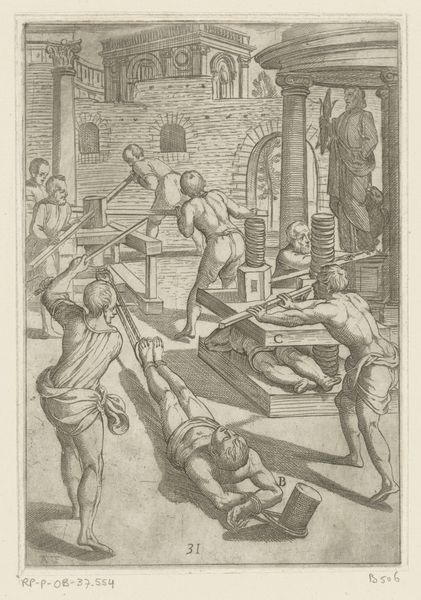
Mercurius als personificatie van Deugd redt zielen bij voorgeborchte en Daphne verandert in boom 1490s
0:00
0:00
andreamantegna
Rijksmuseum
drawing, ink, pen, engraving
#
drawing
#
allegory
#
pen sketch
#
pencil sketch
#
figuration
#
ink
#
pen-ink sketch
#
pen work
#
pen
#
history-painting
#
italian-renaissance
#
engraving
Dimensions: height 280 mm, width 413 mm
Copyright: Rijks Museum: Open Domain
Editor: So, this engraving, "Mercurius als personificatie van Deugd redt zielen bij voorgeborchte en Daphne verandert in boom," created in the 1490s by Andrea Mantegna, shows a complex scene with figures and architectural elements. There's definitely a lot going on; it feels almost theatrical. What are your initial thoughts on this piece, especially considering its place in history? Curator: It's a fascinating visual statement of its time, isn't it? Mantegna, steeped in classical learning and deeply embedded in the artistic milieu of Renaissance Italy, is presenting us with a highly structured allegory. We must consider the sociopolitical climate. The idea of 'virtue rescuing souls' connects directly with humanist ideals that were gaining prominence. How do you see that reflected in the visual organization of the piece? Editor: Well, the strong contrast between the chaotic pile of bodies and the upright figures of Mercurius and Daphne, or rather Daphne as a tree, visually emphasizes the triumph of virtue. It seems to critique the perceived moral decay of the time? Curator: Precisely. The Rijksmuseum is the perfect home for it; its role is to foster that historical analysis. These scenes and the prominent positioning of Mercurius wasn’t merely aesthetic, they are laden with meaning. How would a contemporary audience, shaped by the politics of the church and the growing influence of classical thought, have understood this complex layering of narratives? Consider, too, the role of printmaking in disseminating such ideas beyond the elite. Editor: That's really insightful. I hadn’t fully grasped how the engraving medium itself contributed to the work's social impact and its dialogue with a wider public. Curator: It shows the image functioning within a particular ideological framework and distributed through then-modern methods of art dissemination, which really underscores the piece's public function, I think. Editor: I now see it as more than just an artistic rendering; it is a carefully constructed argument that invites social engagement, even debate. Thank you!
Comments
No comments
Be the first to comment and join the conversation on the ultimate creative platform.
